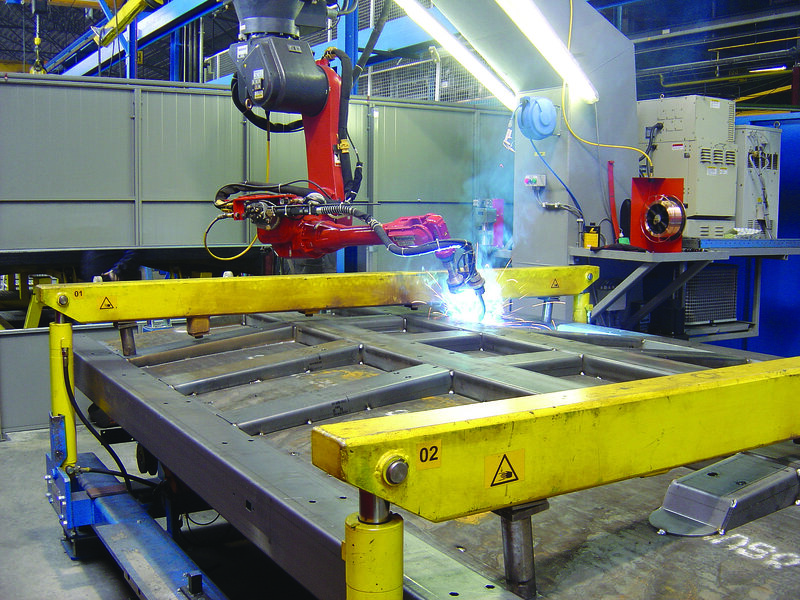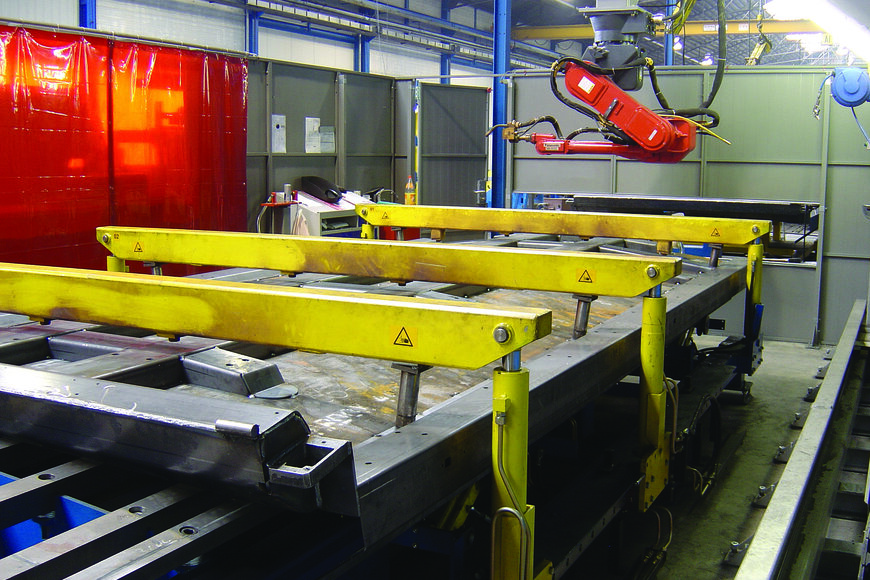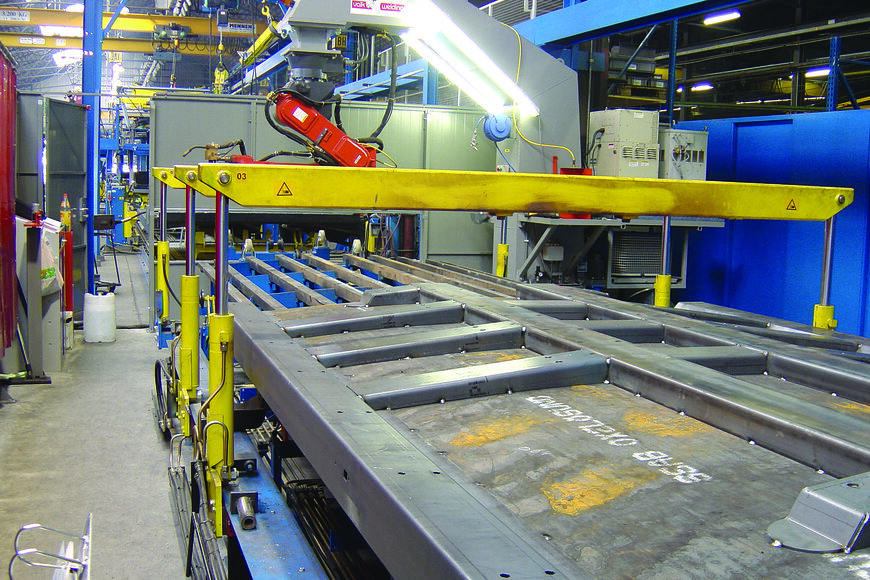Geesink’s experiences with automatic welding, gained over the past 12 years, proved a valu-able basis for setting up the new production process. The development team at Geesink, led by construction supervisor Abel Stulp, examined all the possible designs, during an extensive study phase, for making as much of the welding work on the new container as computer-driven as possible. Each design was first of all set up in DTPS by Abel Stulp himself and subsequently evaluated for investment and lead time. Abel Stulp has been working with DTPS since 1999, for programming products as well as their templates and he can now do anything with it. In the existing situation the loose components are first bonded in cali-brated templates, before they are welded in a second template by the welding robot. Geesink wanted to move on from this logistically complicated and labour-intensive process. A method therefore had be developed for manufacturing the container in a line system.
New container in production line
Initially, it was hoped that the new container could be welded completely by robots. The large volume, accessibility and the weight that had to be manipulated, however, would make this very expensive. It was decided, therefore, to use a robot to weld only the base plate, as it has many short welds. On the production line, the side panels are welded parallel with the ‘base line’, using longitudinal machines, and then added to the line halfway along for manual welding to the base plate. Geesink developed the whole concept in cooperation with an engineering bureau, with Valk Welding providing the welding robot cell for the base plate. The welding robot cell consists of a Panasonic VR008L welding robot on a bogey, which can reach all the welding points of the base plate along a 10-metre track. All the components for the base plate are bonded manually at an earlier station, after which they are rolled on to the welding robot cell. Every two hours, production is shifted on to the next station in the line. During that time, both the manual welders and the welding robot must complete their work. There are a total of nine stations in the line.
Reduced lead time
This new method of production has resulted in greatly simplified logistics, a significant reduction in the number of movements of loose parts and a reduction in the lead time of a complete container to 18 hours. There are now four complete containers rolling off the line in a single day shift. The sheet-metal department, where the thick steel plate is cut to size, set and tapped holes inserted, provides the correct quantity of components during each night shift. External suppliers, such as the coating company, are ready at precisely the right time to collect the finished container. This means a significant gain in space previously required for buffer storage.
Reduced risk of standstill
The disadvantage of a production line is that the speed is determined by the slowest link, with the whole
line coming to a standstill in the event of a fault. If a fault occurs with the welding robot, and Geesink itself cannot solve it, a Valk Welding engineer therefore has to be on site within four hours. Abel Stulp: “Valk Welding is known for its excellent service, which has been well-proven.” Valk Welding has been helping out at Geesink since 1994. During that time, Valk Welding supplied the first welding robot to Geesink, welding off a product that previously required 6.5 hours of manual welding, in just under 3 hours. The cell, consisting of a hanging weld-ing robot and fitted with a tactile search system, is still in full daily production. A later model includes an 8-shaft welding cell for the side and back walls of the rear loaders, which are positioned by two manipulators, each weighing 1000 kg. Experiences with the new production line are so positive that Geesink is planning to produce the rear loaders in a production line. Clearly, the welding robots will again take over an important part of the welding work.
Year of installation: 2004





